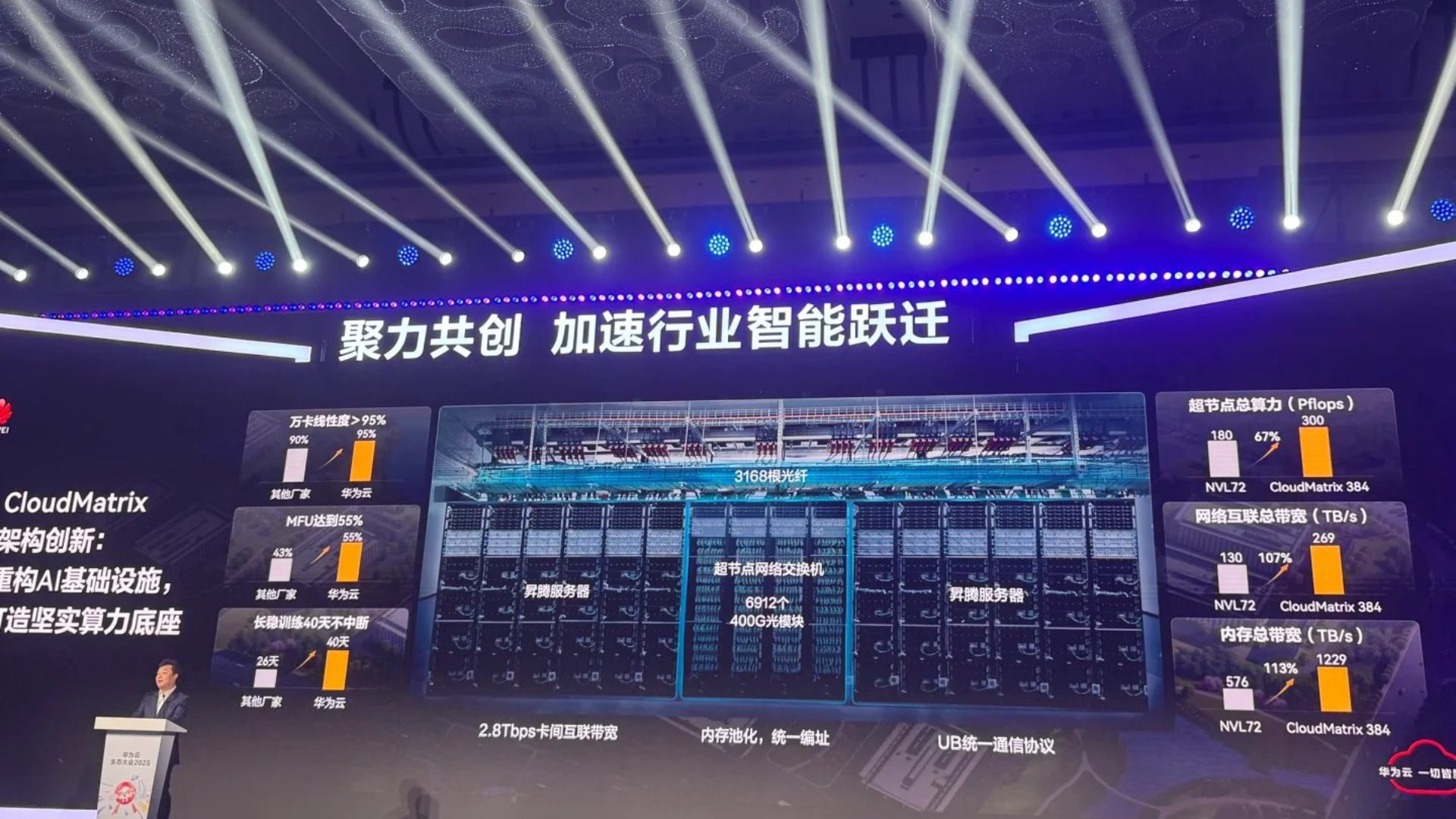Nvidia finally has some AI competition as Huawei shows off data center supercomputer that is better “on all metrics”

Table of Contents
During the Huawei Cloud Ecosystem Conference 2025, Huawei unveiled its CloudMatrix 384 supercomputer, which, according to Zhang Ping’an, Huawei’s Executive Director and CEO of Cloud Computing, features “high density,” “high speed,” and “high efficiency,” and leads the pack in computing power, interconnect bandwidth, and memory bandwidth.
Until now, Nvidia has dominated the AI supercomputing space, and the recent unveiling of its upcoming NVIDIA GB300 NVL72 system has further cemented that position. According to the green team, the GB300 NVL72 delivers 1.5x more AI performance than the previous NVIDIA GB200 NVL72, and sources claim that tech giants like Apple have already invested an estimated $1 billion into GB300 NVL72 systems.
Better than GB300 NVL72?
According to Zephyr on Twitter, Huawei's CloudMatrix 384 is said to be “better than the GB300 NVL72 on all metrics” thanks to the GPUs powering it. The supercomputer gets its name from the 384 upcoming Ascend 910C chips it uses, which are built on a 7nm process node from both TSMC and SMIC. These chips also take a simpler approach than Nvidia's, using two silicon interposers connected via an organic substrate.
By translating Huawei’s performance claims from the slide above (this higher resolution image makes things easier), we can determine what exactly which metrics are being used to compare the two AI datacenter solutions.
| Specification | NVL72 (Nvidia) | CloudMatrix 384 (Huawei) | How much better? (%) |
|---|---|---|---|
| Total computing power | 180 Pflops | 300 Pflops | 67% |
| Total network bandwidth | 130 TB/s | 269 TB/s | 107% |
| Total memory bandwidth | 576 TB/s | 1,229 TB/s | 113% |
Huawei’s official presentation claims the Cloudmatrix 385 system delivers 300 PFLOPS of computing power, 269 TB/s of network bandwidth, and 1,229 TB/s of total memory bandwidth. It also achieves 55 percent model fitting utilization (MFU) during training workloads and offers 2.8 Tbps of inter-card bandwidth, heavily emphasizing its strength in networking.
So, it is clear that companies are starting to recognize the growing demand for computing power, and Huawei's data center supercomputer could mark the beginning of a new wave of competition. We should note that AMD is also hot on the heels, though one expert claims that “AMD can’t compete” just yet.
